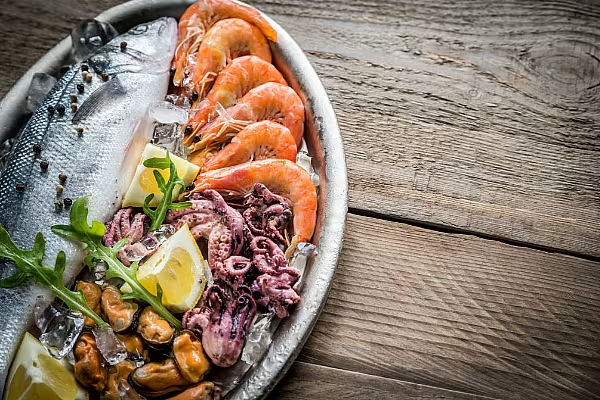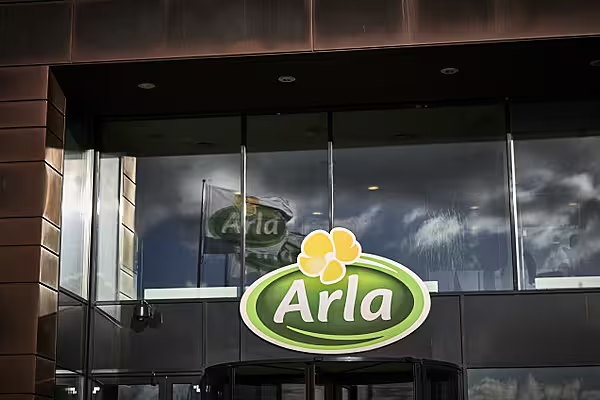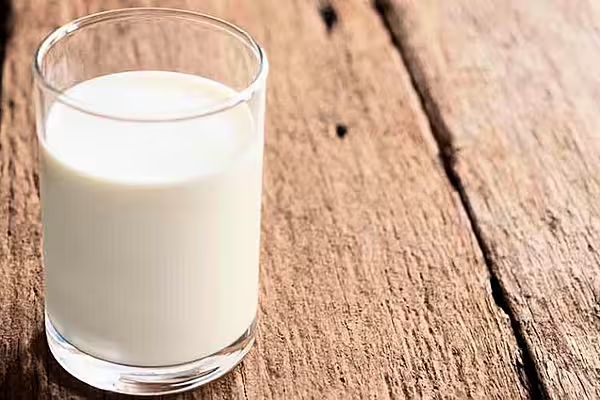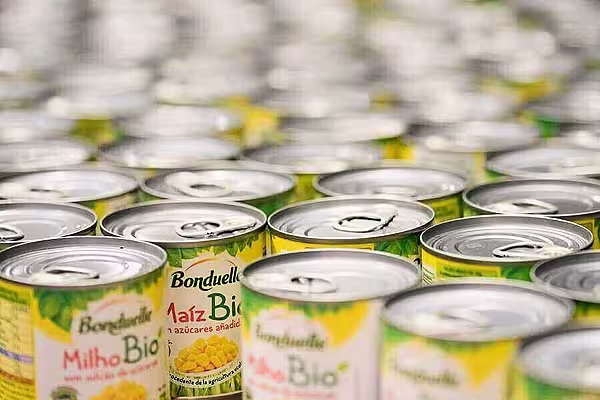The seafood industry has navigated the choppy waters of the COVID-19 pandemic relatively well, but changes to trading agreements and varying consumer tastes have presented both challenges and opportunities for the sector. This article first appeared in ESM Issue 2 2021.
With aquaculture now the world’s fastest-growing protein production industry, the global seafood industry continues to go from strength to strength. The demand for healthy products and the growing adoption of pescatarianism is fuelling demand on the consumer side, while retailers are seeking to offer a broad range of options, tailoring their offerings to consumers’ changing needs.
The seafood sector hasn’t been immune to the challenges of COVID-19, however, with suppliers impacted by the closure of the HoReCa sector and consumer tastes shifting, due to the changed economic circumstances. By and large, however, the industry has managed to navigate the choppy waters of the past few months.
“In the months following the COVID-19 outbreaks around the world, we lost export opportunities while, at the same time, being hit in our foodservice sales within the EU,” Peter Bamberger, president of CEP, the EU Association of National Organisations of Fish Importers and Exporters, tells ESM. “With a time lag of a few months, our imports also dropped significantly.
“Seafood operators have responded in a variety of ways – converting production from fresh fish to frozen, and durable goods sold via the retail channel, direct delivery to private households via web sales, and scaling down production temporarily. In some instances, sales to retail have increased, creating shortages in supply. Seen in total, despite huge efforts made to adapt to COVID-19, the consequences are that the world seafood market and trade has contracted, and the future is still quite uncertain.”
From a retail perspective – provided that supply can be maintained – the pandemic has proven to be positive for seafood sales. As one retailer told us, the likelihood of restrictions will remain in place for the next few months, at least, saying, “Out-of-home consumption will continue to be lower than before. Retailers will be a shelter for the seafood industry in a ‘new normal’ situation, with fewer ups and downs in the market.”
Similarly, Guus Pastoor, president of AIPCE, the EU Association of Fish Processors, sees opportunities for retailers to capitalise.
“We have seen consumer demand for seafood boom in the retail channel because people could not go out dining,” Pastoor says. “Consumers are looking for value-added products to make their life easy when cooking at home.
“I believe we have attracted new consumers during the COVID crisis through the retail channel. Average consumption of seafood is relatively low in a number of countries, so there is opportunity for further growth.
Often, consumers aren’t confident about preparing seafood, and the processing industry has responded by offering a variety of easy-to-prepare products. Those who are not convinced will turn to the restaurants to eat their favourite seafood when that will be possible again. We are optimistic about the outlook for seafood as a healthy and tasty alternative to other food categories.”
State Of The Industry
The 2020 edition of the European Market Observatory for Fisheries and Aquaculture Products’ (EUMOFA’s) EU Fish Market report, which incorporates data gathered as of June 2020 and was published at the end of last year, offers a big-picture analysis of the inner workings of the seafood industry, and places it within a global macroeconomic context.
As the report notes, fish and seafood prices in the EU have been growing steadily since 2014 and were 14% higher in 2019 than in 2011. This is due to a reliance on imports, as prices on imported fish rose.
In 2019, EU household expenditure on fishery and aquaculture products reached €56.6 billion, representing a 3% increase on 2018, with Italy leading the way in terms of expenditure: €11.686 billion. Portugal had the highest per-capita expenditure, at €371, much higher than the EU average of €110.
Consumption trends have generally fallen in the EU, but they showed slight growth in 2019, the report shows. Some species have seen a decrease in volume, but an increase in price – for example, the report shows that, in 2019, groundfish (such as cod, hake and Alaska pollock) imported to the EU from third countries totalled 1.32 million tonnes, or €5.15 billion, in value terms. This represented a 2% decrease in volume on 2018, but a 12% (€544 million) growth in value, which was driven mostly by cod and Alaska pollock imports. The price of cod increased by 13%, to €5.63 per kilo – a ten-year high.
Seafood Trading
In 2019, seafood imports and exports between the EU and the rest of the world totalled 8.55 million tonnes, with a value of €33 billion, making the EU the second-largest trader after China.
In 2019, extra-EU imports of fishery and aquaculture products reached a ten-year high, of 6.34 million tonnes. More than one quarter of extra-EU imports originates from Norway, as huge volumes of fish are exported from non-EU Norway to EU member Sweden, which is the main entry point for high-value Norwegian products, which then get sent around the EU.
As a net importer, the EU had a trade deficit of €21 billion in 2019, the report notes, meaning that the trade deficit had grown by 33%, in real terms, between 2010 and 2019.
Salmon is the most-imported species into the EU, mainly from Norway, followed by a smattering of other products, such as shrimp and tuna from Ecuador, and Alaska pollock from China and the US, to name but a few.
In terms of exports, the EU grew its volume to 2.21 million tonnes in 2019 – a 6% increase, compared to a decade earlier. The EU’s largest exports are herring, blue whiting, skipjack tuna, mackerel, non-food-use products, and salmon. Nigeria, Egypt, Norway, China and the US all import a significant number of EU products.
COVID-19 Impact
According to the EUFOMA study, the impact of COVID-19 has not been uniform across the different segments of Europe’s fisheries and aquaculture industry.
The pandemic had little impact on products from small pelagics, as these are mainly processed into frozen products, and their market prices are still relatively low. However, fisheries selling fresh fish were more impacted, and producers engaging with the HoReCa segment suffered the most. In some extreme instances, suppliers were given very little notice that businesses had to close, meaning that orders of fishery and aquaculture products arrived and were sent to food waste straight away.
Other areas in which the industry ran into COVID-related difficulties included the processing sector, as it faced challenges in ensuring safe working conditions. The industry suffered losses in exports as well, as international demand fell across the board, forcing producers to sell to other EU countries at reduced prices.
On the positive side, the pandemic did see one benefit for the fisheries and aquaculture sector, as a drop in global oil prices resulted in lower costs for the fishing fleet. Fuel prices dropped by 30%, on average, across the first three quarters of 2020.
‘Huge efforts have been made by many market players to adapt to the new market dynamics and many have succeeded,’ the report reads. ‘However, it seems as if the fishery and aquaculture industry must live with the uncertainties from the COVID-19 pandemic for the foreseeable future.’
Developing A Level-Playing Field
While the EU market for seafood has shown slow but steady growth in recent years, one important factor remains: Europe does not produce sufficient seafood to meet consumer demand, which is leading to consternation between a number of representative groups.
Autonomous tariff quotas (ATQs) were introduced in the EU trade policy to provide for a level playing field, meaning that if processors import certain species for further processing in the EU, the import duty will be lifted. The most recent set of ATQs entered into force at the start of this year.
This trade instrument is limited to preset maximum amounts of imports, taking into account any production and/or manufacturing capacity in the EU and based on studies that show no negative price effects for the EU producers.
However, some fishing organisations, notably Europêche, the representative body for fishermen in the European Union, along with the European Association of Fish Producers’ Organisations (EAPO), believe that ATQs are being used, in many cases, with ‘the sole purpose of getting access to cheap and low-standard fish from foreign fleets which in turn puts pressure on EU producers’ prices and employment’.
“Subsidising additional fish imports from non-EU countries would not only increase [the European] Union market’s dependence on fish imports, but also put further pressure on prices and leave our companies out of business,” Pim Visser, EAPO president, said in October. “Fishers feel abandoned by an EU that puts so much emphasis on the sustainability of EU products, but so little on imported fish.”
Both the AIPCE and CEP have rejected this charge, adding that it ‘does not understand the confusing and antagonistic messages’ among some fishing organisations towards the trade instrument.
“The ATQs were set in place for two main reasons,” Peter Bamberger, CEP president, tells ESM. “Firstly, for fishery products, we in the EU processing industry were in short supply from EU fisheries and EU aquaculture, and we needed sourcing via import. In general terms, the sourcing from import accounts for around 60% of our supplies, which is critical for employment and value-adding in the EU. If you take cod, imports account for around 90% of the total supply. Secondly, the ATQs should provide for an equal footing for processing in the EU, compared to processing outside the EU.”
According to Bamberger, the ATQ regime has largely met its purpose thus far, and dialogue with the EU Commission has been constructive, he adds, saying, “There is still room for improvement. For some species – for example, flatfish – we need significantly more supplies. New species should be added more easily. Some processing types are not qualifying, such as controlled-atmosphere packing, and new quotas – when the earlier three-year round expires – should be set in place earlier, enabling commercial contracts to be agreed upon on transparent and known terms.”
Guus Pastoor, the AIPCE president, agrees. “With a growing European market, we should not consider imports for processing to be a threat to EU fishermen,” he tells ESM. “This is often stated, but all studies point out that the market growth is a positive for all stakeholders in the value chain.
“If we don’t process the seafood in the EU, the consumer products will be made somewhere else and then be imported, so there is no reason to tax imports of seafood meant for processing in the EU. By doing so, we are taxing jobs. These ATQs are a much-needed instrument to secure jobs.”
While the current set of ATQs is set to run until the end of December 2023, don’t expect this debate to disappear anytime soon.
Brexit Challenges
The other elephant in the room, of course, is Brexit, and while the UK formally left the European Union on somewhat amicable terms at the end of last year, the future structure of the EU-UK relationship, when it comes to fishing rights, is likely to remain a hot topic for several years to come.
According to the hastily agreed deal, EU boats will be permitted to fish in British waters over the coming years, albeit from a slowly dwindling quota, as part of an ‘adjustment period’.
By 2026, annual negotiations will take place, to determine how the catch is to be shared out between the UK and the EU. In theory, this could lead to the UK prohibiting EU vessels from its waters altogether, although the EU would likely respond in kind, making this an unlikely scenario.
As CEP president Peter Bamberger notes, the UK’s new status as a “third country” isn’t the biggest issue facing the European seafood sector, as the bloc deals with ‘third countries’ all the time – rather, it is the level to which duties will apply to imports and exports.
“What we did not foresee to its full extent were the duties we need to pay for import and export,” Bamberger says. “Fish and crustaceans that we import and process in the EU are met with duties when re-exported to the UK, and the same goes for import from UK. Catch certificates, together with storage or processing declarations, need to follow consignments, and the supply chains are often quite complex. This can be quite a heavy administrative challenge.
“In conclusion, our trade with the UK will end up at a lower level than before 2021.”
According to the AIPCE’s Guus Pastoor, the effects of Brexit are likely to be the same for both processing and trading companies, although a “specific issue for processors is the availability of fish coming from UK vessels and the catch opportunities for EU vessels. In the Brexit agreement, the EU has transferred 25% of its catch quota in UK waters to the UK. This could result in a relocation of landings to the UK and fewer landings in EU ports. This seafood will have to be transported to the EU, and this implies extra logistic and administrative costs. This can also have a negative effect on the shelf life of the products, due to the time lost transporting goods to processing plants in the EU.”
Another issue relates to UK-flagged ships owned by EU companies, Pastoor adds.
“Under the agreement, these ships, which used to land their fish in EU ports, will now most likely land their fish in the UK because of the economic link requirements set by the UK. In the longer run, it remains to be seen what the impact will be, and if certain processing activities will be relocated to UK.”
Increasing Biodiversity
Sustainability is an increasingly important topic underpinning the seafood sector, with MSC and ASC certifications now adopted as benchmarks for most retailers in the same way that Fairtrade has become a standard in the tea and coffee trade. Despite this, more needs to be done at an EU level, and in January, a press briefing was held by a number of NGOs to announce the publication of a joint paper detailing ten recommended EU actions on marine biodiversity, in response to the bloc’s 2030 Biodiversity Strategy.
During the briefing, lead campaigners from the Deep Sea Conservation Coalition, the International Fund for Animal Welfare, Oceana in Europe, Our Fish, Sciaena, and Seas at Risk spoke about issues that they wish to see addressed in the strategy.
One particular call to action that resonated and was mentioned by all campaigners was that the laws that are in place are not being enforced, causing serious damage to Europe’s oceans and the diverse range of life in the water. The NGOs see this as a failure to implement the EU laws by the EU itself, and prioritising fisheries and profits over wildlife.
The groups called for action plans to combat various issues, such as climate change, by-catching, bottom-trawling, the transport industry, and deep-sea mining, all of which disrupt the oceans and endanger the aquatic life within.
Arguments put forward for each case included implementing environmental impact assessments on fisheries, redirecting subsidies harmful to biodiversity, a strict ban on using the bottom-trawling method to fish due to the damage it does to seabed life, modernising fishing ships so they cause less pollution of the oceans, and calls for a moratorium of deep-sea mining until more information regarding deep-sea creatures’ impact on the ocean is uncovered.
The NGOs noted that there are currently zero repercussions for those who break the existing laws, and this needs to change in order for the EU to get onto the front foot, instead of merely appeasing fishing groups.
Tackling Ocean Plastics
Allied to the need for increased ocean biodiversity is the issue of ocean plastics and their effect on the seafood that we catch and consume. Reuters’ investigative journalism arm, The Conversation, recently found that, to date, some 386 marine fish species are known to have ingested plastic debris, including 210 species that are ‘commercially important’.
Since the first studies were carried out on plastic ingestion by marine life – the first scientific observation of this issue came from the stomach of a seabird in 1969 – more than 100 papers have discussed plastic ingestion in numerous species of fish. The Conversation drew on every scientific study published between 1972 and 2019 (some 129 papers in total) and discovered that research has been carried out on potential ingestion by 555 species around the world, of which two thirds had been found to have ingested plastic.
‘Our review of four decades of research indicates that fish consumption of plastic is increasing. Just since an international assessment conducted for the United Nations in 2016, the number of marine fish species found with plastic has quadrupled,’ Reuters reported. ‘Similarly, in the last decade alone, the proportion of fish consuming plastic has doubled across all species. Studies published from 2010-2013 found that an average of 15% of the fish sampled contained plastic; in studies published from 2017-2019, that share rose to 33%.’
While the science isn’t perfect – as the study concedes, earlier studies that showed no plastic consumption may have been hindered by the inability to detect microplastics – it is nonetheless alarming, particularly when you consider that species living in ocean regions such as the Mediterranean and the coasts of East Asia – many of which enter into the food chain – are more likely to have plastic in their stomachs.
‘Of more than 20,000 marine fish species, only roughly 2% have been tested for plastic consumption,’ the study notes, ‘and many reaches of the ocean remain to be examined. Nonetheless, what’s now clear to us is that “out of sight, out of mind” is not an effective response to ocean pollution – especially when it may end up on our plates.’
With the seafood category continuing to grow, retailers and suppliers alike will be eager to ensure that they row in behind category values, as well as offering good value.
© 2021 European Supermarket Magazine. Article by Stephen Wynne-Jones. For more Fresh Produce news, click here. Click subscribe to sign up to ESM: European Supermarket Magazine.














